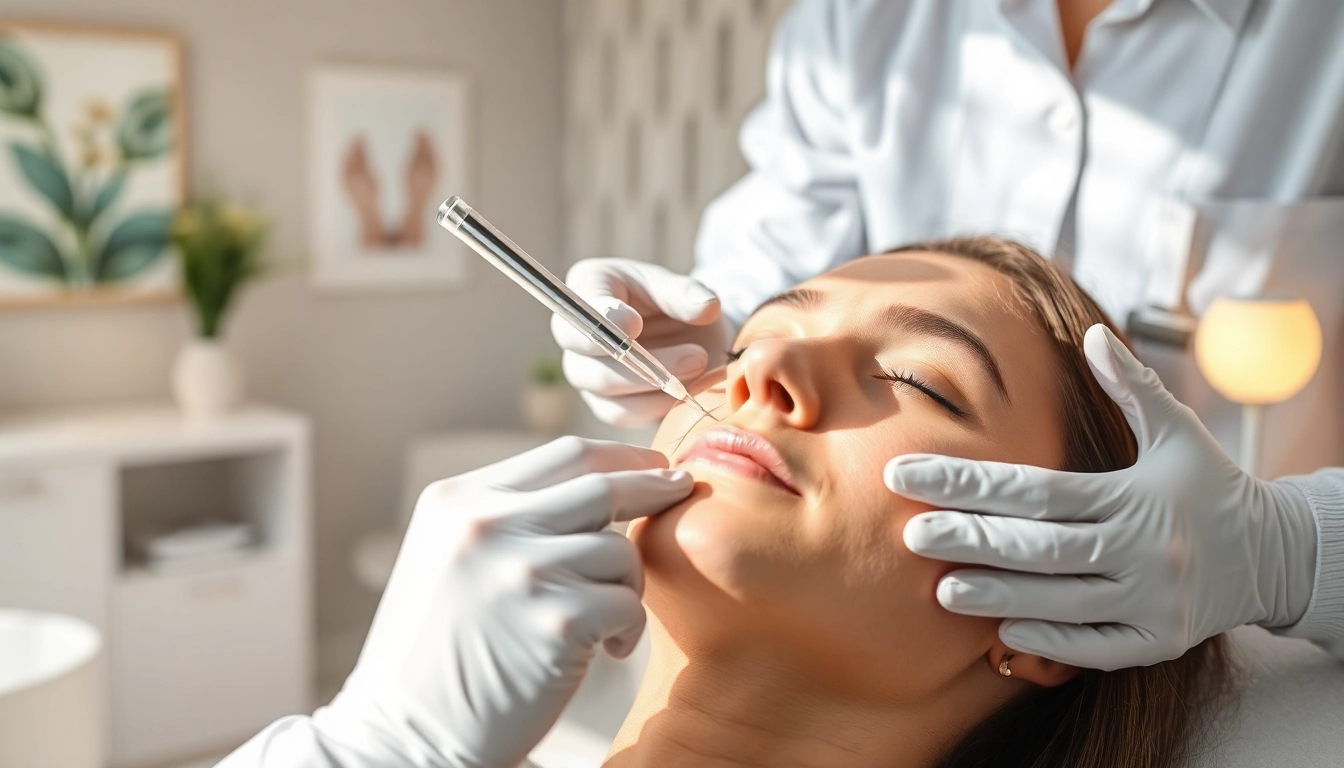Understanding Wrinkle Treatments
As the desire to maintain youthful skin continues to grow, the field of wrinkle treatments has expanded significantly. Whether it’s for cosmetic purposes or overall skin health, understanding these treatments is crucial. This comprehensive guide delves deep into the various aspects of wrinkle treatments, from their types and causes to popular solutions, preparation methods, and the future trends in this dynamic field. For an in-depth look at effective solutions, explore our Wrinkle Treatments options.
Types of Wrinkles and their Causes
Wrinkles are primarily categorized into two types: dynamic and static. Understanding these types can help in selecting the appropriate treatment.
- Dynamic Wrinkles: These are the result of repeated facial movements. When we smile, frown, or squint, the skin creases in specific areas. Over time, these creases become permanent lines — commonly seen around the eyes (crow’s feet), forehead (frown lines), and mouth.
- Static Wrinkles: Unlike dynamic wrinkles, static wrinkles occur when the skin loses its elasticity and firmness due to aging and sun damage. They are visible even when the face is at rest, typically seen as sagging or drooping skin, particularly around the neck and jowl area.
How Wrinkle Treatments Work
Wrinkle treatments function through various mechanisms depending on the type of intervention. Most treatments aim to either plump the skin, promote collagen production, or reduce muscle movement.
- Injectables: These involve substances like botulinum toxin that temporarily paralyze facial muscles, smoothing dynamic wrinkles. Alternatively, dermal fillers add volume to the skin, effectively reducing the visibility of both dynamic and static wrinkles.
- Laser Treatments: By utilizing concentrated light beams, laser treatments promote skin tightening, rejuvenation, and collagen production. This method improves skin texture and reduces wrinkle depth.
- Topical Solutions: Creams and serums with active ingredients like retinoids and peptides improve skin elasticity and promote cell turnover, leading to a more youthful appearance.
Choosing the Right Treatment for You
Selecting the appropriate wrinkle treatment requires careful consideration of skin type, age, and the severity of wrinkles. Consulting a professional is crucial for personalized advice. Additionally, understanding treatment options, expected outcomes, and recovery can significantly impact your decision. Here are some factors to consider:
- Skin Type: Different treatments may work better on oily, dry, or combination skin.
- Age: Younger individuals might prefer less invasive treatments compared to older adults who may require more intensive procedures.
- Desired Results: Clearly articulate your goals and expectations during consultations.
Popular Wrinkle Treatments: Overview
The market offers a range of wrinkle treatments, each tailored to specific skin types and concerns. Here’s an overview of the most popular options available.
Injectables: Botox and Fillers
Injectables have revolutionized the field of aesthetic treatments, with Botox and dermal fillers leading the way.
- Botox: FDA-approved for cosmetic use, Botox is an excellent treatment for dynamic wrinkles. By blocking signals from the nerves to the muscles, it temporarily prevents the contraction of facial muscles, leading to a smoother appearance.
- Dermal Fillers: These injectable gels consist of hyaluronic acid or other biocompatible substances designed to restore volume in areas like cheeks and lips. They effectively reduce the appearance of static wrinkles by plumping the skin.
Laser Treatments: Non-Invasive Options
Laser treatments are increasingly popular for their ability to rejuvenate skin without surgery. Options include:
- Fractional Laser Therapy: This non-ablative treatment creates micro-injuries in the skin, stimulating natural healing processes and collagen production.
- CO2 Laser Resurfacing: A more intensive procedure that removes layers of skin, making it effective for deep wrinkles and significant sun damage.
Topical Solutions: Creams and Serums
Topical treatments are widely accessible and can be used as adjuncts to more invasive procedures. Key ingredients include:
- Retinoids: Vitamin A derivatives that promote cell turnover, leading to smoother skin texture and reduced wrinkles.
- Peptides: Amino acids that boost collagen production, helping maintain skin firmness and elasticity.
Preparing for Your Wrinkle Treatments
Preparation is essential for achieving optimal results from wrinkle treatments. Here are some steps to take prior to your procedure.
Consultation and Skin Assessment
Before any treatment, a thorough consultation and skin assessment by a qualified professional are crucial. During this process, the practitioner will:
- Evaluate your skin type and condition.
- Discuss your medical history and any allergies.
- Help determine which treatment options align with your goals.
Setting Expectations for Results
Understanding what results to expect is vital. Treatments like Botox produce effects almost immediately, while others, like fillers or laser procedures, may take additional time to show full results. Always discuss realistic outcomes during consultations.
Aftercare Instructions for Optimal Recovery
Aftercare is essential for ensuring proper recovery and maximizing results. Common aftercare instructions include:
- Avoiding sun exposure for 48 hours post-treatment.
- Refraining from vigorous exercises to reduce swelling.
- Using cold compresses to minimize discomfort and swelling.
Benefits and Risks of Wrinkle Treatments
Like any cosmetic procedure, wrinkle treatments offer a variety of benefits as well as potential risks. Understanding these can help in making informed decisions.
Short-term Benefits: Immediate Results
One of the most attractive aspects of wrinkle treatments is their immediacy. For instance, Botox can reduce dynamic wrinkles within a few days, while fillers offer instant results by restoring lost volume. This allows individuals to enjoy a younger appearance without prolonged downtime.
Long-term Advantages: Skin Health
Many wrinkle treatments not only enhance appearance but also improve overall skin health. For example:
- Laser treatments promote collagen production over time, leading to firmer skin.
- Topical solutions can maintain skin hydration and improve texture, ensuring skin remains healthy and vibrant.
Potential Risks and How to Mitigate Them
While generally safe, wrinkle treatments come with some risks including bruising, swelling, or allergic reactions. Mitigation strategies include:
- Choosing experienced practitioners.
- Monitoring any allergies with a patch test if using topical treatments.
- Following aftercare instructions meticulously to avoid complications.
Future of Wrinkle Treatments: Trends and Innovations
The landscape of wrinkle treatments is continuously evolving with advancements in technology and techniques. Awareness of these trends can help individuals stay informed and make better choices for their skin.
Advancements in Cosmetic Procedures
New techniques are emerging, including the use of ultrasound and radiofrequency treatments that provide non-invasive tightening without the risks associated with surgery. These methods allow for treatments without significant downtime.
Natural Approaches: Biostimulatory Agents
Biostimulatory agents, such as poly-L-lactic acid, are gaining popularity for their ability to stimulate collagen growth over time, offering long-lasting results unlike traditional fillers.
Holistic Treatments: Integrating Wellness
There’s a growing trend towards holistic wellness, leading many to consider wrinkle treatments as part of a broader skincare regimen. This may include dietary changes, stress management, and overall health optimization.



